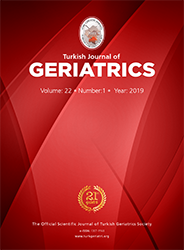Materials and Method: A total of 22 patients over 65 years received hypofractionated radiotherapy (40 Gy in 15 fractions) and temozolomide (75 mg/m2/day).
Results: No grade 3 and 4 leukopenia or thrombocytopenia occurred among the patients. The median survival for patients with grade IV disease (including gliosarcoma) was 7 months [95% confidence interval (CI), 3.0-10.9] and that of patients with grade III disease was 2 months (95% CI, 0-35.6). There was no need to stop or delay the treatment.
Conclusion: Standard and short-course radiotherapy and temozolomide were found to be equally effective to prevent disease progression and salvage treatment. Notably, elderly patients find it difficult to visit a hospital everyday. Moreover, long-term therapies are financially and physically burdensome for them. Besides, comorbidities are seen often in the elderly.
Keywords : Aged; Glioblastoma; Astrocytoma; Radiation Dose Hypofractionation; Radiotherapy
